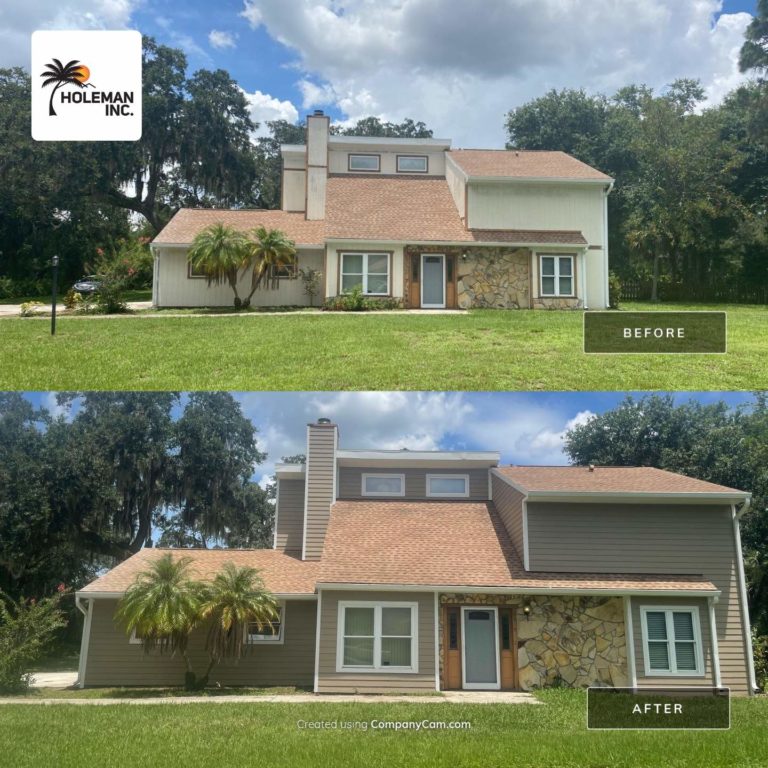If you have decided to have James Hardie siding installed on your home and business, you know you are about to transform your space into a showplace. If you have selected a James Hardie Elite Preferred contractor to perform the work, you know your siding will be installed according to strict manufacturer’s standards. Just because the finished product will be seamless, however, does not mean the entire project will come off without a hitch. Construction is as much an art as it is a craft, and it is subject to the vagaries of the weather, logistical hangups, and unforeseen difficulties on the job site.
Establishing strong, regular communication with your installation contractor can nip these problems in the bud before they blossom into major setbacks and disagreements that create tense business relationships, lead to hard feelings, and can sometimes even devolve into litigation. Simply questioning your siding installation crew’s supervisor any time you do not understand the process can prevent a setback from becoming a set-to. Delays happen; changes may be required; most issues can be worked out by talking them out.

Questions to Ask Before Signing a Contract
Vetting and selecting your siding contractor generates dozens of questions. Many, like those about a company’s license status, experience, and references, can be found by snooping around the internet. Check the company’s website and verify that its license is valid by contacting your state or local contractors’ board. As discussed above, you should also make sure your potential siding partner is authorized to install James Hardie products. It will not be hard to find out. Certification is a feather in a construction company’s hat. Only a fraction achieve Elite Preferred status. Those who do will display their badge prominently on their marketing material.
Other questions should be addressed when you meet with contractors, set the bid parameters, or negotiate the contract:
-
-
Will All the people installing my siding be employees of your company?
Some siding installers subcontract a portion of the job to specialty companies. For instance, they may hire another firm to tear off your existing siding, install additional insulation, or repair any water damage to your framing. Subcontracting work is not necessarily a red flag, but you have a right to know who the main contractor is using on your job and what tasks they will be performing.
-
-
-
How Big Is the Crew?
Siding panels are cumbersome to carry and hold in place during installation, so several workers will be required. Crew size is an indication of how quickly the job can be finished. During this conversation, also ask your contractor whether workers will remove all the existing siding at once or section by section, with crews installing the new siding as they work their way around the house. The all-at-once approach can leave the home’s infrastructure exposed to the elements unless the crew is large enough to cover it in short order.
-
-
-
What Is Included in the Contract?
Siding contracts should specify the exact product to be installed, its color and specifications, and how much square footage will be needed. It also should contain the anticipated start and completion dates (subject to weather and other circumstances beyond the contractor’s control) and a list of ancillary services to be performed. One of the most important of these “extras” is how the contractor will leave your property. Conscientious builders will remove all siding scraps, dropped nails, and other debris, leaving your yard, drive, sidewalk safe and as beautiful as the Hardie siding they have installed.
-
-
-
What Are the Payment Terms?
Successful siding contractors have the financial wherewithal to purchase materials and start work without requiring a substantial up-front payment. Some contractor boards recommend or even require contractors to ask for no more than 10 percent of the total contract cost or $1,000, whichever is less, as a down payment. Your contract should specify the total cost, down payment, and a schedule of payments to be made during the project. Keep payments in line with progress on the siding job: Pay about 25 percent when the job is a quarter of the way finished, another 25 percent at the halfway point, etc. The final 5 or 10 percent should be paid after you are satisfied with the job and the cleanup.
-
-
What Warranties Do You Offer?
Top contractors will warranty the workmanship on your siding project, along with the siding manufacturer’s quality warranty. No contractor is perfect, but the best ones recognize and admit when they make mistakes. They will take corrective action at no charge under the terms of their warranties. For instance, the Holeman Satisfaction Guarantee offers the most extensive warranties in the industry, backed by James Hardie’s product quality warranties.
Getting satisfactory answers to these questions will give you the best chance of completing a hassle-free siding installation. The communication should not end when you sign on the dotted line, however. To keep the project running smoothly, schedule regular consultations with your crew’s supervisor or foreman. At the end of each day, note and photograph any areas that concern you and discuss them during these meetings. Any promises your contractor makes or any mutual decisions to alter the provisions of the contract should be documented and signed by both parties. Keep these change orders in a project file along with the contract, receipts, and other important papers.
With more than two decades serving South Florida businesses and homeowners, Holeman is a James Hardie Elite Preferred contractor. We would be honored to provide a free estimate for your siding project. Fill out this form, and we will be in touch.
